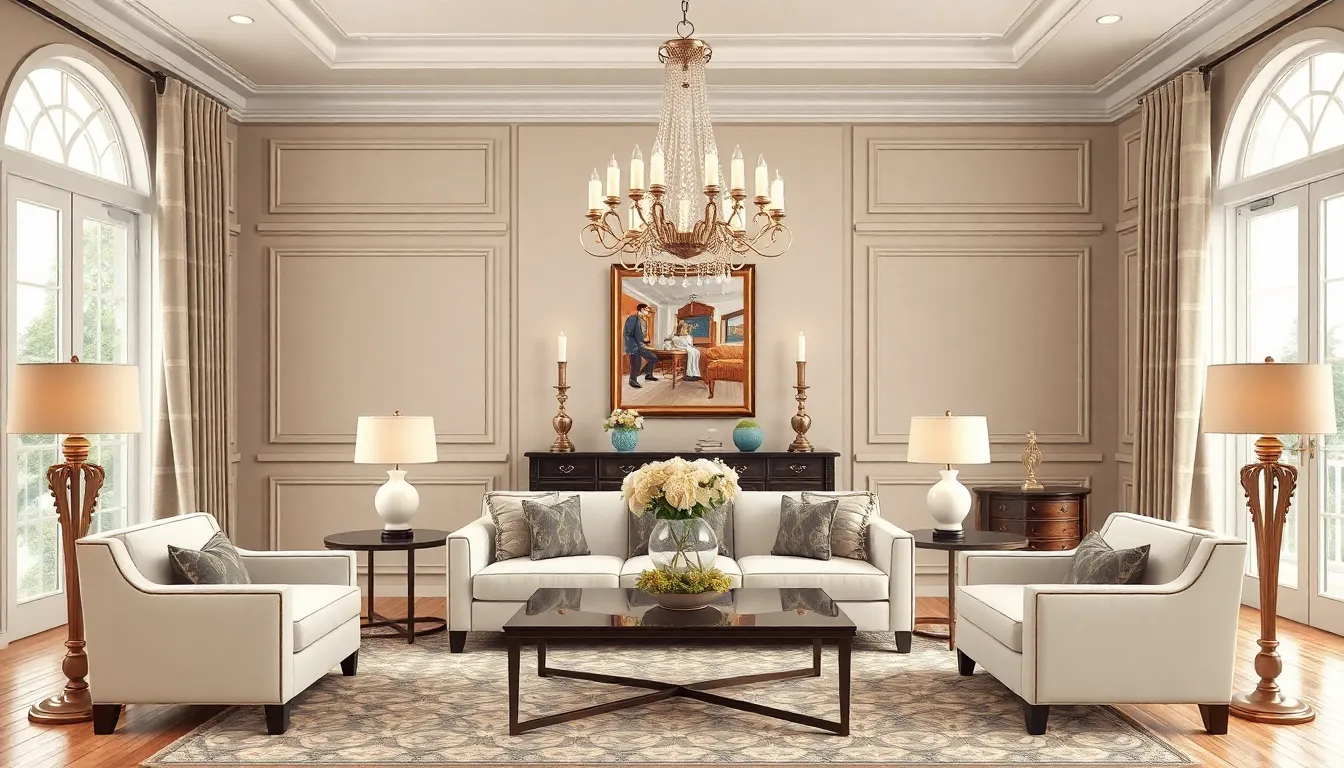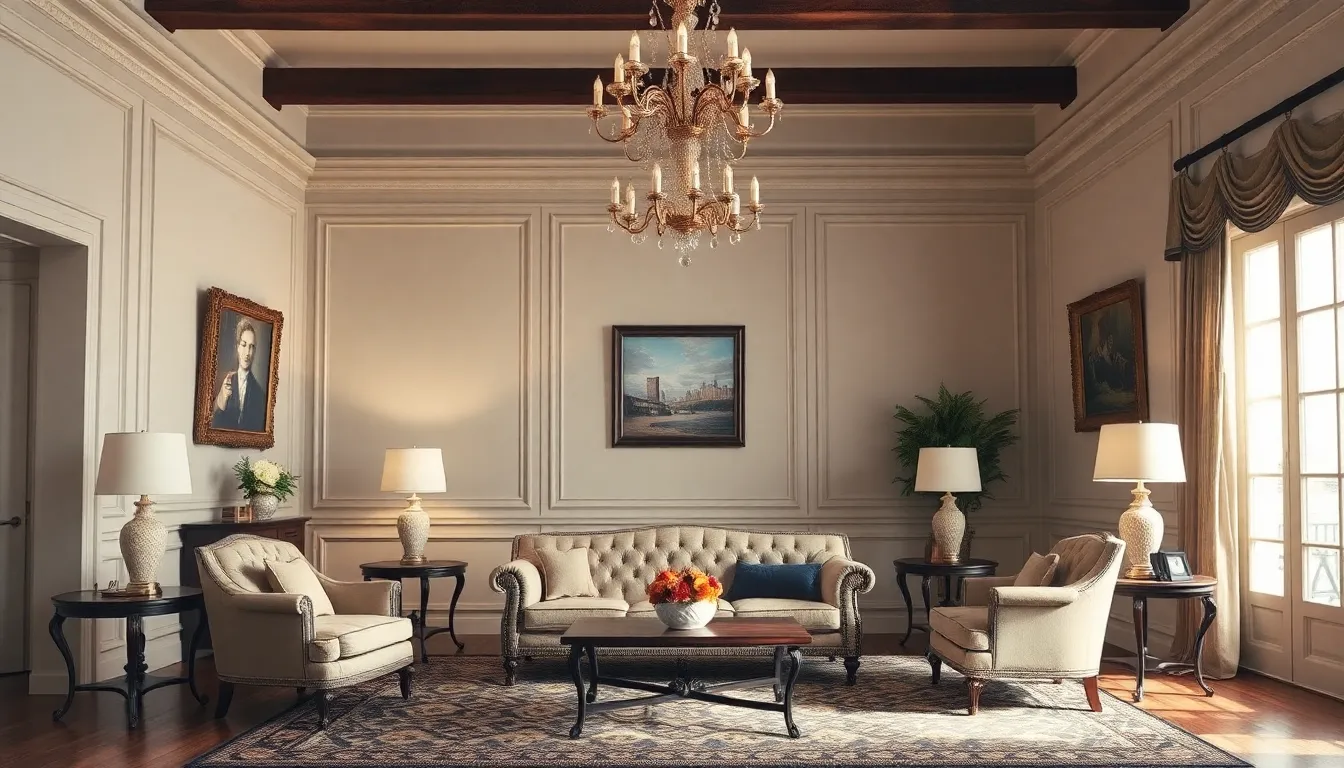In a world where trends come and go faster than a cat video can go viral, classic design concepts stand tall like a timeless oak tree in a forest of fleeting fads. They’re the reliable friends who show up to every party, bringing style and sophistication without the need for a flashy entrance. Whether it’s the elegance of Art Deco or the simplicity of Mid-Century Modern, these design principles have proven their worth time and again.
Diving into the realm of classic design isn’t just about aesthetics; it’s about embracing a legacy that resonates with both history and innovation. So grab your favorite beverage, kick back, and discover how these enduring concepts can transform any space into a masterpiece that even your most pretentious friend will admire. After all, who wouldn’t want to live in a place that feels like a curated museum exhibit?
Table of Contents
ToggleOverview of Classic Design Concepts
Classic design concepts embody timeless principles that consistently inspire contemporary creativity. These styles, revered for their elegance and functionality, frequently manifest in various spaces. Art Deco, with its bold geometric shapes and opulent details, showcases a luxurious aesthetic that remains appealing. Mid-Century Modern emphasizes simplicity and connection to nature through clean lines and organic forms.
Utilizing neutral palettes, these designs often incorporate rich textures and materials. Additionally, classic concepts integrate historical influences that inform modern interpretations. Each style uniquely contributes to creating sophisticated environments that marvel even discerning guests.
Consider how elements like symmetry and proportion enhance interior spaces, fostering harmony and balance. Iconic furnishings, such as Eames chairs or Bauhaus tables, present an excellent representation of minimalist yet functional design. Functionality merges with visual appeal, ensuring spaces engage and sustain interest over years.
Classic design concepts also prioritize craftsmanship, underscoring quality over quantity. This dedication to detail often translates into enduring pieces that withstand trends. Spaces inspired by classic design principles not only serve aesthetic purposes but also evoke emotional connections with history. Transforming ordinary areas into extraordinary places, these designs tell stories that resonate through time.
Key Elements of Classic Design


Classic design relies on specific elements that create timeless beauty and functionality. Understanding these components enhances appreciation for styles like Art Deco and Mid-Century Modern.
Symmetry and Balance
Symmetry plays a vital role in classic design. It creates visual stability, guiding the eye across a space. Balanced arrangements of furniture, artwork, and architectural features foster an inviting atmosphere. For instance, matching lamps on either side of a sofa produce harmony. Designers often utilize symmetrical layouts to evoke a sense of order. This not only pleases the eye but also reinforces the elegance intrinsic to classic styles.
Proportion and Scale
Proportion and scale significantly impact classic design effectiveness. These principles dictate how elements relate to one another within a space, ensuring comfort and aesthetic appeal. Choosing furniture that aligns with the size of a room delivers coherence. A grand chandelier, for example, enhances a high-ceilinged living area without overwhelming it. Classic designs emphasize the importance of maintaining appropriate proportions, creating environments where each element complements the others and harmonizes with the overall composition.
Timeless Design Principles
Timeless design principles enhance aesthetic appeal while creating emotionally resonant spaces.
Harmony and Unity
Harmony and unity in design create a cohesive atmosphere. Consistent elements like color palettes and materials promote visual connectivity. Classic designs often embrace repetition, ensuring that patterns and textures feel integrated. Carefully selected pieces resonate with one another, fostering a balanced environment. Furniture arrangements that reflect symmetry lead to inviting spaces. Thoughtful placement of accessories enhances the overall unity of a room. By emphasizing these foundational concepts, designers cultivate environments that evoke a sense of belonging and tranquility.
Contrast and Emphasis
Contrast and emphasis play crucial roles in communicating focus within a design. Bold colors against neutral backgrounds attract attention and highlight key features. Varying textures can create visual interest, guiding the eye to specific areas. Effective use of light and shadow enhances architectural details, making them more pronounced. Statement pieces, like a vibrant artwork or unique furniture, command attention and elevate the overall aesthetic. In classic design, striking contrasts foster dynamism while maintaining a sense of elegance and sophistication. Thoughtful contrasts ensure spaces remain engaging and visually stimulating.
Famous Classic Design Movements
Classic design movements have shaped aesthetics and culture across centuries. Understanding these movements reveals their lasting impact on design principles today.
Neoclassicism
Neoclassicism emerged in the 18th century, inspired by the art and architecture of ancient Rome and Greece. This movement emphasized grandeur through symmetry and simplicity. It often featured columns, domes, and clean lines, reflecting a return to classical ideals. Designers sought to elevate spaces by incorporating high-quality materials like marble and wood. Iconic examples include the works of architects such as Thomas Jefferson, whose design of the Virginia State Capitol showcases neoclassical principles. The emphasis on balanced proportions created a sense of order and tranquility within interiors.
Arts and Crafts Movement
The Arts and Crafts Movement originated in the late 19th century as a reaction against industrialization. This movement prioritized craftsmanship and natural materials over mass production. Designers valued simplicity, functionality, and organic forms, which fostered a connection to nature. Iconic figures, such as William Morris, championed intricate patterns and handmade goods. The movement celebrated individuality, making each piece a reflection of the artisan’s skill. Highlights include furniture and textiles that emphasize rich textures and earth-toned colors. Ultimately, this movement emphasized the importance of creating spaces that resonate with authenticity and beauty.





